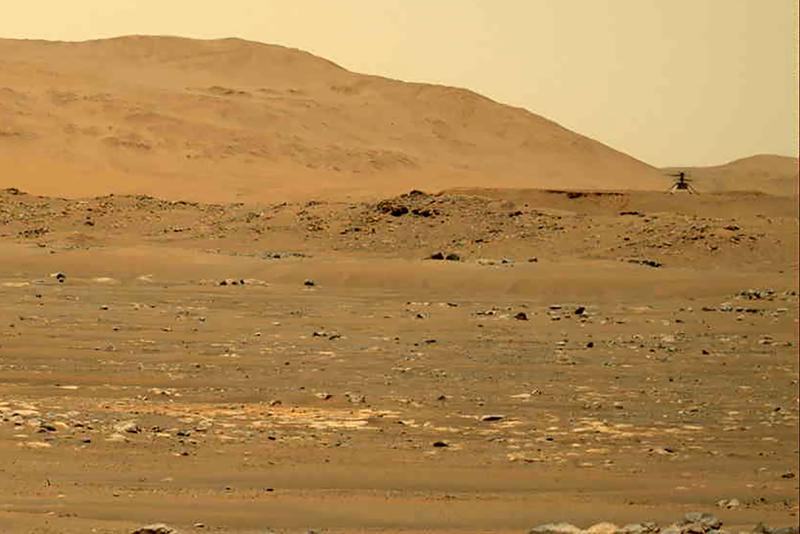Japan aims to bring back soil samples from Mars moon by 2029

TOKYO Aug , 20 (AP) — Japan’s space agency plans to bring soil samples back from the Mars region ahead of the U.S. and Chinese missions now operating on Mars, in hopes of finding clues to the planet’s origin and traces of possible life.
The Japan Aerospace Exploration Agency, or JAXA, plans to launch an explorer in 2024 to land on the Martian moon Phobos to collect 10 grams (0.35 ounce) of soil and bring it back to Earth in 2029.
The rapid return trip would put Japan ahead of the United States and China in bringing back samples from the Martian region despite starting later, project manager Yasuhiro Kawakatsu said in an online news conference Thursday.
NASA’s Perseverance rover is operating in a Mars crater where it is to collect 31 samples that are to be returned to Earth with help from the European Space Agency as early as 2031. China landed a spacecraft on Mars in May and plans to bring back samples around 2030.
JAXA scientists believe about 0.1% of the surface soil on Phobos came from Mars, and 10 grams could contain about 30 granules, depending on the consistency of the soil, Kawakatsu said.
Tomohiro Usui, professor at the Institute of Space and Astronautical Science, said soil on Phobos is likely to be a mixture of material from the moon itself and material from Mars that was spread by sandstorms. Collecting samples from multiple locations on Phobos could provide a greater chance of obtaining possible traces of life from Mars than obtaining soil from a single location on Mars, he said.
Any life forms that might have come from Mars will have died because of harsh solar and cosmic radiation on Phobos, JAXA scientists said. The NASA and the European Space Agency missions focus on potential life forms and evolution of the area of the Jezero crater, believed to be an ancient lake.
By studying Phobos soil samples including material from Mars, scientists hope to learn about the evolution of the Martian biosphere, Usui said.
He said Japanese research on Phobos and NASA’s samples from specific locations in the Martian crater can complement each other and could lead to answers to questions such as how Martian life, if present, emerged and evolved in time and place.
Last December, a JAXA probe, Hayabusa2, brought back more than 5 grams (0.19 ounce) of soil from the asteroid Ryugu, more than 300 million kilometers (190 million miles) from Earth, in the world’s first successful return of an asteroid sample.
Recent News

Do not make expressions casting dout on election: EC
14 Apr, 2022
CM Bhatta says may New Year 2079 BS inspire positive thinking
14 Apr, 2022
Three new cases, 44 recoveries in 24 hours
14 Apr, 2022
689 climbers of 84 teams so far acquire permits for climbing various peaks this spring season
14 Apr, 2022
How the rising cost of living crisis is impacting Nepal
14 Apr, 2022
US military confirms an interstellar meteor collided with Earth
14 Apr, 2022
Valneva Covid vaccine approved for use in UK
14 Apr, 2022
Chair Prachanda highlights need of unity among Maoist, Communist forces
14 Apr, 2022
Ranbir Kapoor and Alia Bhatt: Bollywood toasts star couple on wedding
14 Apr, 2022
President Bhandari confers decorations (Photo Feature)
14 Apr, 2022










